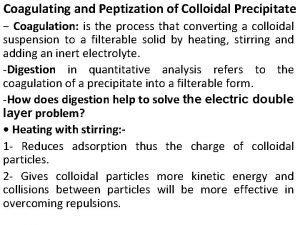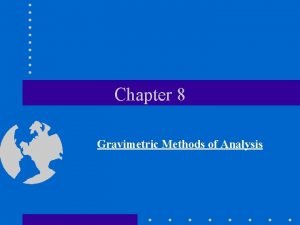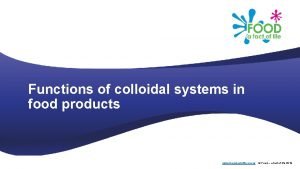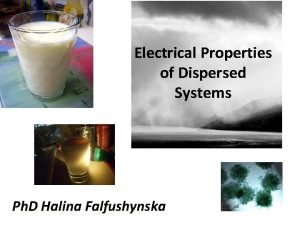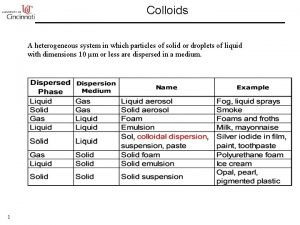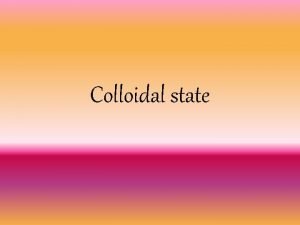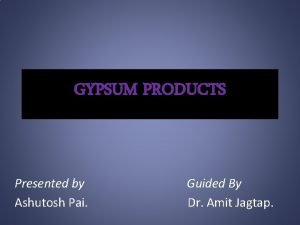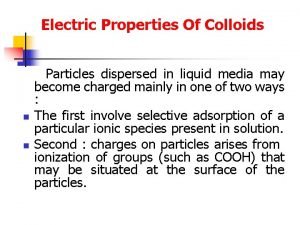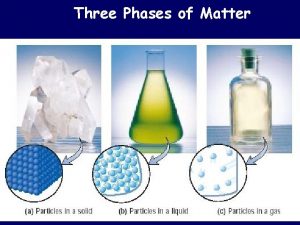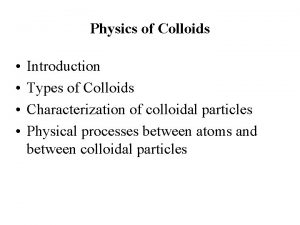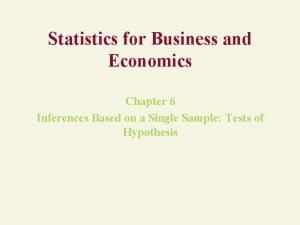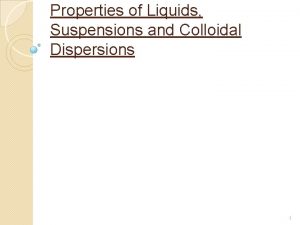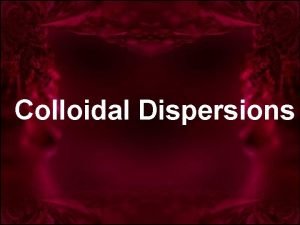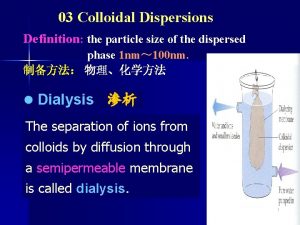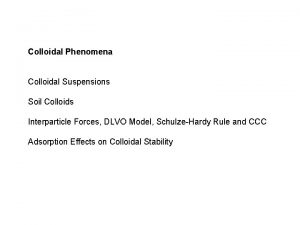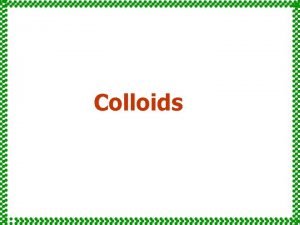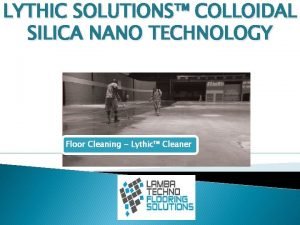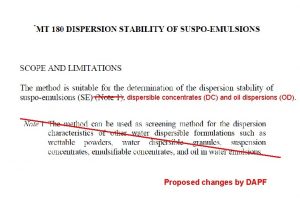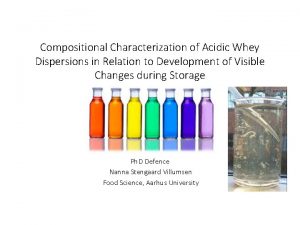Solutions and Colloidal Dispersions Chapter 20 Solutions and















- Slides: 15

Solutions and Colloidal Dispersions Chapter 20

Solutions and Colloidal Dispersions Objectives Vocabulary �Describes the properties of solutions �Describe the properties of colloidal dispersions �Identify and describe three types of colloidal dispersions �Use examples to explain how solutions and colloidal dispersions exist as foods �Unsaturated �Solubility �Colloidal dispersions �Aggregate �Dispersed phase �Continuous phase �Emulsions �Temporary emulsion �Homogenization �Osmosis

Solutions �Solutions: Crash Course Chemistry #27 (8: 21) �http: //www. youtube. com/watch? v=9 h 2 f 1 Bjr 0 p 4 �Solutions are homogenous mixtures of at least two substances, a solute that dissolves in a solvent. �Solutes can be solids liquids and gases EX: salt �Solvents can be solids liquids and gases but it is usually a liquid like water.

Solutions �Saturated, Unsaturated, and Superstaurated Solutions (10: 20) �http: //www. youtube. com/watch? v=Qe. Nn 3 s. Y 1 bu 4 �Unsaturated- as long as the solution contains less solute it can be dissolved at a given temperature �Saturated- solution that contains all the solute given at a given temperature

Solubility �Solubility – describes the maximum amount of solute that can be dissolved in a definite amount of solvent at a specific temperature �Temperature effects solubility �Mixtures that are heated can dissolve more than mixture at a cooler temperature

Vitamins and Minerals in Solutions �Surface area – the greater the surface area is exposed to the solution the greater the vitamin and mineral loss.

Colloidal dispersions �Colloidal Dispersions – particles of one substance are distributed, or dispersed, in another substance without dissolving. �Aggregate – a group or dense cluster of ions or molecules �B 12 molecules form aggregates in a colloidal dispersion

Two Phases of Colloidal dispersions �Dispersed phase- substance that is dispersed within another �Continuous phase- substance that extends throughout the system and surrounds the dispersed phase

Emulsion �Emulsions are one type of colloidal dispersion �Emulsions – a mixture of two liquids that normally don’t blend with one another �Since the two liquids cant combine they are said to be immiscible �The two basic types of emulsion is oil and water. �What is an emulsion (3: 07) �http: //www. youtube. com/watch? v=b. C_cz. AL 24 z. Y

Emulsion �Temporary emulsion – you can get two liquids to mix by stirring (but it will only stay mixed for a little while)

Emulsion �Permanent Emulsions – by adding an emulsifier to a mixture can keep one liquid permanently dispersed. �Emulsifiers – substances that can be used to hold emulsions together.

Homogenization �Homogenization – fat globules are reduced to a smaller, more equal, size and distributed evenly

Food foams �Foams are another type of colloidal dispersion �These dispersions of gas in liquid are actually very complex colloidal dispersions

Solutions Particles dissolve Unsaturated Saturated Ex. Sugar in Iced tea Colloidal Dispersions Particles don’t dissolve Dispersed phase Continuous phase Temporary emulsions Permanent emulsions need emulsifiers Ex. Whipped cream, mayo, milk

Food separation techniques �Food scientist need to know this to sell powdered products to consumers. �Distillation is a method of separating a mixture by heating it up
 Which are not purely surface phenomena
Which are not purely surface phenomena Cengage
Cengage Difference between occlusion and mixed-crystal formation
Difference between occlusion and mixed-crystal formation Difference between colloidal and crystalline precipitate
Difference between colloidal and crystalline precipitate Occlusion in gravimetric analysis
Occlusion in gravimetric analysis Colloids examples food
Colloids examples food Stability of sols
Stability of sols Colloidal system is heterogeneous
Colloidal system is heterogeneous Define colloidal state
Define colloidal state Colloidal silica gun mix
Colloidal silica gun mix Stan jones blue
Stan jones blue Theories of gypsum setting
Theories of gypsum setting Protective colloids
Protective colloids Types of colloidal system
Types of colloidal system Types of coloids
Types of coloids Population proportion
Population proportion


